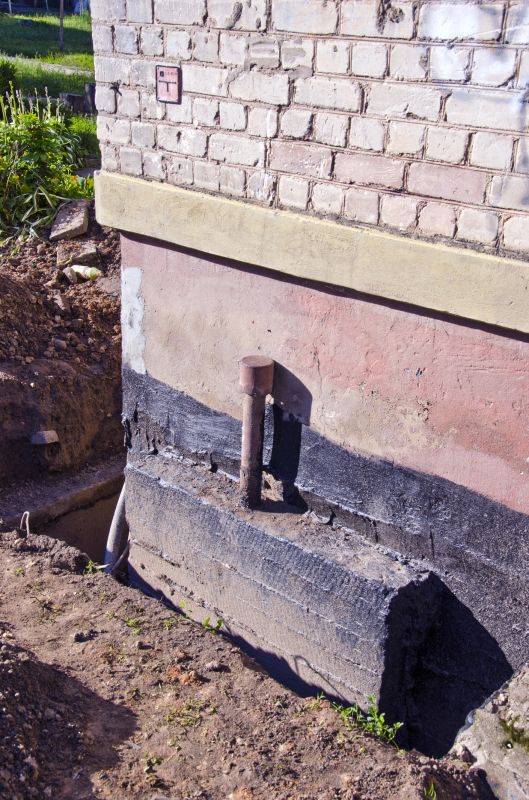Popular Foundation Repair Supplies To Restore Your Home’s Stability
Explore a range of reliable repair supplies that help address foundation issues and improve overall structural safety.
 Foundation repairs are a critical aspect of maintaining the structural integrity of a building, especially in areas like North Liberty, IA, where soil conditions and weather patterns can influence foundation stability. Selecting appropriate products for foundation repair involves understanding various options available on the market, each designed to address specific issues such as settling, cracking, or shifting. From underpinning systems to sealing solutions, the right products can help reinforce or stabilize a foundation effectively. Proper application and compatibility with existing structures are essential considerations to ensure long-term performance.
Foundation repairs are a critical aspect of maintaining the structural integrity of a building, especially in areas like North Liberty, IA, where soil conditions and weather patterns can influence foundation stability. Selecting appropriate products for foundation repair involves understanding various options available on the market, each designed to address specific issues such as settling, cracking, or shifting. From underpinning systems to sealing solutions, the right products can help reinforce or stabilize a foundation effectively. Proper application and compatibility with existing structures are essential considerations to ensure long-term performance.
Top Overall Option
Hydraulic Pile and Pier System
A hydraulic pile and pier system is a versatile foundation support option that can be used to lift and stabilize sinking or settling foundations. These systems typically involve steel or reinforced concrete piers that are hydraulically driven into the ground beneath the structure, providing targeted support and load transfer. They are suitable for a variety of foundation types and can be installed with minimal disruption to the property. Properly designed and installed hydraulic systems can offer long-term stability, making them a reliable choice for foundation repair projects.
Types of Products For Foundation Repairs
Hydraulic Piers
Steel or concrete piers driven into the ground to lift and stabilize foundations.
Polyurethane Foam Injection
Foam injections used to fill voids and lift sinking sections of a foundation.
Epoxy Crack Repair
Epoxy resins used to bond and seal cracks in concrete foundations.
Surface Sealants
Waterproof sealants applied to foundation surfaces to prevent water intrusion.
Soil Stabilization Products
Materials used to improve soil stability around foundations.
Underpinning Systems
Support systems that extend the foundation depth to more stable soil layers.
Drainage Systems
Drainage solutions designed to divert water away from foundations.
Grout Injection
Grout used to fill voids and stabilize soil or cracks.
Soil Moisture Barriers
Materials that control soil moisture levels around foundations.
Carbon Fiber Reinforcement
Carbon fiber strips or fabrics used to reinforce cracked walls and prevent further movement.
Popular Choices
Widely used for foundation stabilization and lifting, hydraulic piers are common in repair projects.
A popular method for quick and minimally invasive foundation lifting and void filling.
Frequently chosen for crack repair due to their bonding strength and durability.
Commonly used to waterproof and protect basement walls from water infiltration.
Effective in managing water around foundations, preventing future issues.
Popular for enhancing soil consistency and support around foundations.
Chosen for deep support when existing foundations are compromised.
A common solution for filling voids and stabilizing soil in foundation repair.
Often used for reinforcing cracked walls and preventing further movement.
Foundation repair products come in many forms, including hydraulic piers, polyurethane foam injections, epoxy resins, and surface sealants. Hydraulic piers are often used to lift and stabilize sinking foundations, while polyurethane foam injections can fill voids and prevent further settling. Epoxy resins are suitable for bonding cracks and restoring structural integrity, whereas surface sealants provide protection against water intrusion that can weaken foundations over time. Understanding the specific needs of a property and consulting with professionals can help determine the most suitable products for each situation.
In addition to structural repair solutions, there are products designed to prevent future issues, such as moisture barriers and soil stabilization materials. These products can be particularly useful in regions like North Liberty, IA, where soil expansion and contraction influence foundation health. When choosing foundation repair products, it is important to consider compatibility with existing materials, ease of application, and the longevity of the solution. Proper installation is key to ensuring that the products perform as intended and provide lasting support for the building.
Investing in quality foundation repair products can help mitigate extensive damage and preserve property value. Whether undertaking minor crack repairs or major underpinning projects, selecting the right tools and materials is vital. Always consider consulting with licensed specialists who can recommend the most appropriate products based on the specific foundation issues encountered. With careful selection and proper application, these products can contribute significantly to maintaining a safe and stable structure over time.
Key Buying Considerations
- Identify the specific foundation issues, such as cracking, settling, or water intrusion, to select appropriate products.
- Consider the compatibility of repair products with existing foundation materials like concrete, brick, or stone.
- Evaluate the longevity and durability of the products to ensure long-term stability.
- Assess the ease of installation and whether professional assistance is recommended.
- Determine the environmental conditions, including moisture levels and soil type, that may influence product performance.
- Review the potential impact of repair products on property value and structural safety.
- Check for product certifications or standards that verify quality and effectiveness.
- Consider the size and scope of the repair project to choose suitable product quantities and types.
- Research the manufacturer's reputation and customer feedback for reliability.
- Account for budget constraints while balancing quality and effectiveness.
- Ensure that the products used are compliant with local building codes and regulations.
- Think about future maintenance requirements and whether the products facilitate easy upkeep.
- Look for products that offer clear instructions and support resources for proper application.
- Evaluate the potential for minimal disruption during installation, especially for occupied buildings.
- Consult with foundation repair specialists to get tailored recommendations based on specific site conditions.
